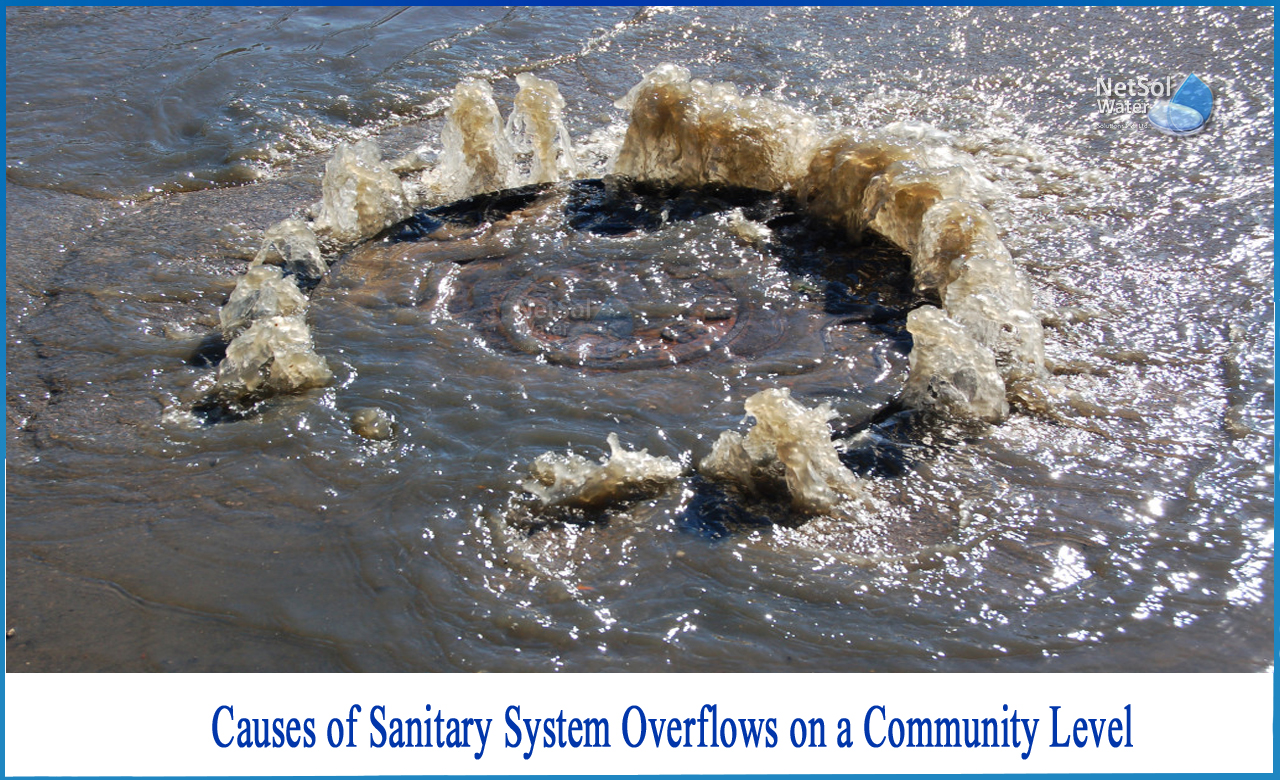What causes overflow in the Sanitary Systems?
Sanitary Sewer Overflow (SSO) occurs when untreated sewage from a sanitary sewer is spilled into the environment before reaching sewage treatment facilities. Wet weather overflow is what it's called when it's caused by rain. Blockages in sewer lines, infiltration/inflow of insufficient stormwater into sewer lines during heavy rainfall, malfunction of pumping station lifts or electrical power breakdown, and broken sewer lines are all causes of sanitary sewer overflows. Regular maintenance and infrastructure upgrades are required to prevent such overflow incidents.
1: Engineering Aspects
Sewers developed during the early stages of urbanisation were typically constructed before sewage treatment was established. Early sewers were simple drainage systems for removing surface runoff and any waste it may carry. When sewage from kitchens, bathtubs, and toilets was added, these drainage systems developed combined sewers, and the discharge became offensive.
Early sewage treatment plants were designed to handle sewage during dry weather; however, treating the larger volume of mixed sewage and precipitation runoff from combined sewers throughout wet weather was impossible. Some communities constructed sanitary sewers to prevent sewage from mixing with surface runoff, allowing for efficient treatment of sewage in both wet and dry conditions.
2: Blockages
In dry weather, decentralized failures are mostly caused by collecting sewer line obstructions, which might be caused by a debris clog or tree root incursion into the line itself. Blockage causes almost half of all SSOs in India.
One of the most difficult aspects of a decentralized line failure is determining the location of overflow, because a typical urban system contains thousands of miles of collection pipes and the central treatment plant has no way of communicating with all of them unless costly monitoring equipment is installed. Bulk dielectric transducers suspended in sewers have been widely installed by companies to detect high levels and relay the occurrences back through fixed wireless data networks.This method has allowed for up to a 60% reduction in pollution occurrences in some areas.
Dry weather obstruction is less frequent in combined sewers because combined sewers are substantially larger than sanitary sewers and are built for the increased amount of surface runoff. Although combined sewer storm water regulators are susceptible to debris obstruction, overflow from such a blockage normally reaches the diversion outfall to prevent flooding private or public property.
3: Inflow
SSOs occur after significant rainstorm events, which can induce stormwater intrusion into sanitary sewers due to damage, incorrect connections, or flooding of buildings and lift stations in low-lying portions of the collection systems.The combined flow of sewage and rainwater exceeds the sanitary sewer system's capacity, and sewage is discharged into homes, businesses, and streets. Inflow into sanitary lines can occur as a result of tree root rupture of underground lines or mechanical fracture caused by age and overpressure from trucks and buildings.
4: Malfunctions
Power outages may deactivate lift station pumps and induce sewage overflow from the lift station wet well, which is another mechanism of system failure. Approximately 10% of SSOs are caused by a mechanical or power failure at a lift station. Because the combined amount of sewage and storm water precludes the use of lift stations, this sort of discharge is unusual from combined sewers. SSOs are caused by broken sewage lines, which account for around 10% of all SSOs.
Conclusion
Power outages, human mistake, or mechanical failure can all result in the release of untreated or partly treated sewage from a sewage treatment plant. This is usually recognized as STP malfunction rather than a sanitary sewer overflow. Overflow from faulty units may be captured and sent to alternate treatment facilities by sewage treatment plants. Flooding of private or public property is usually prevented by directing the overflow to a sewage outfall intended for the release of treated sewage.
What can Netsol Water offer?
Netsol Water is committed to providing our valued customers with hands-on service, expert counselling, and training. Every environmental problem and its management have a solution in us.



